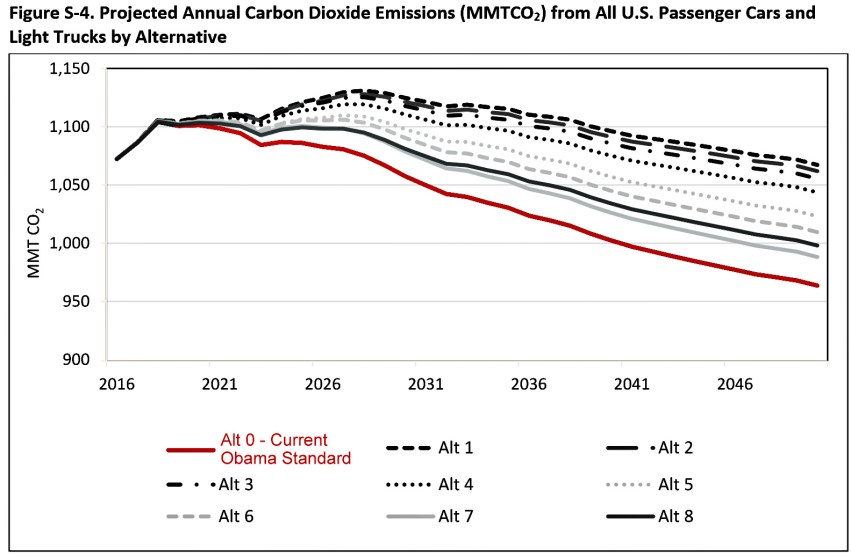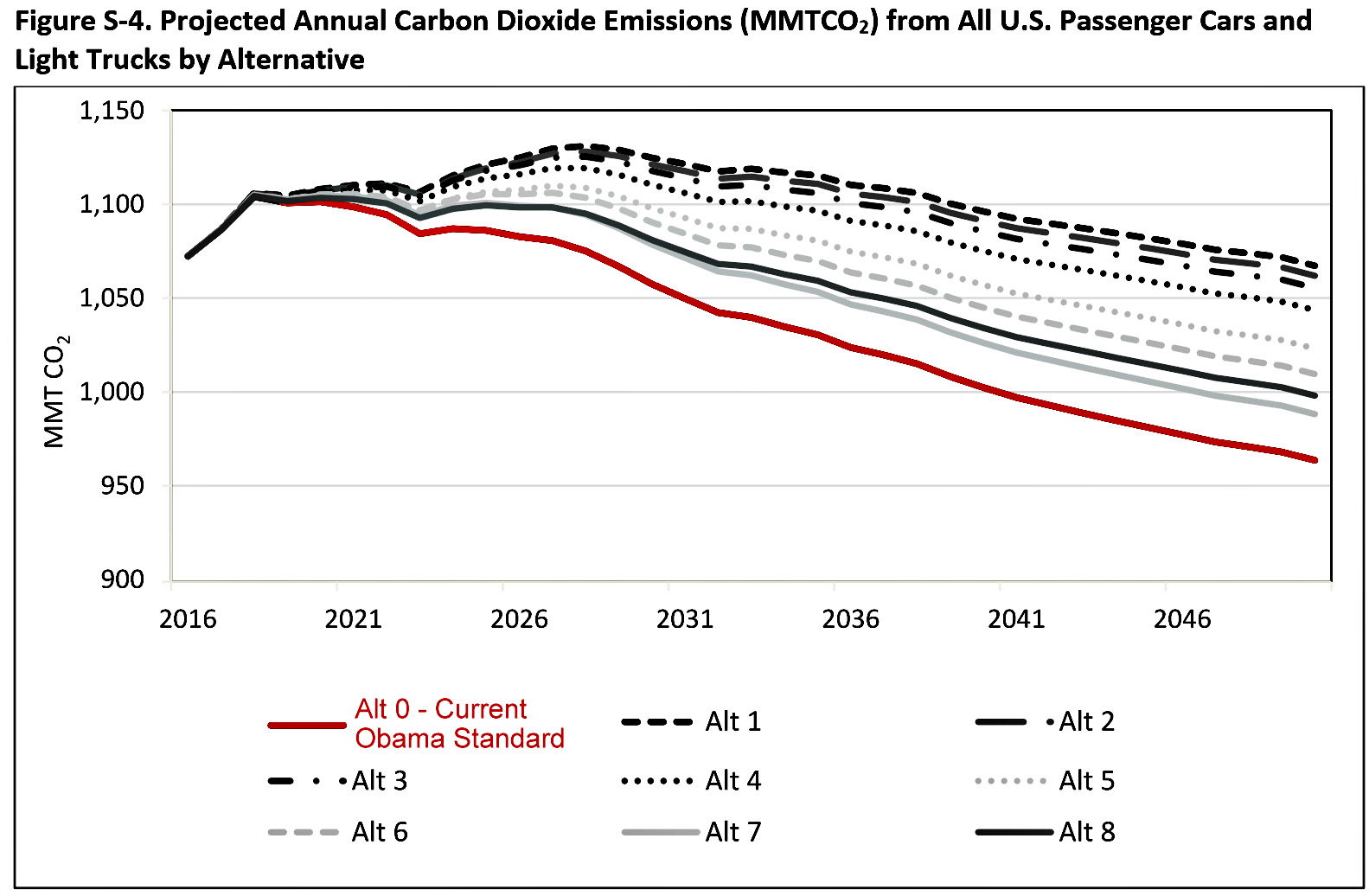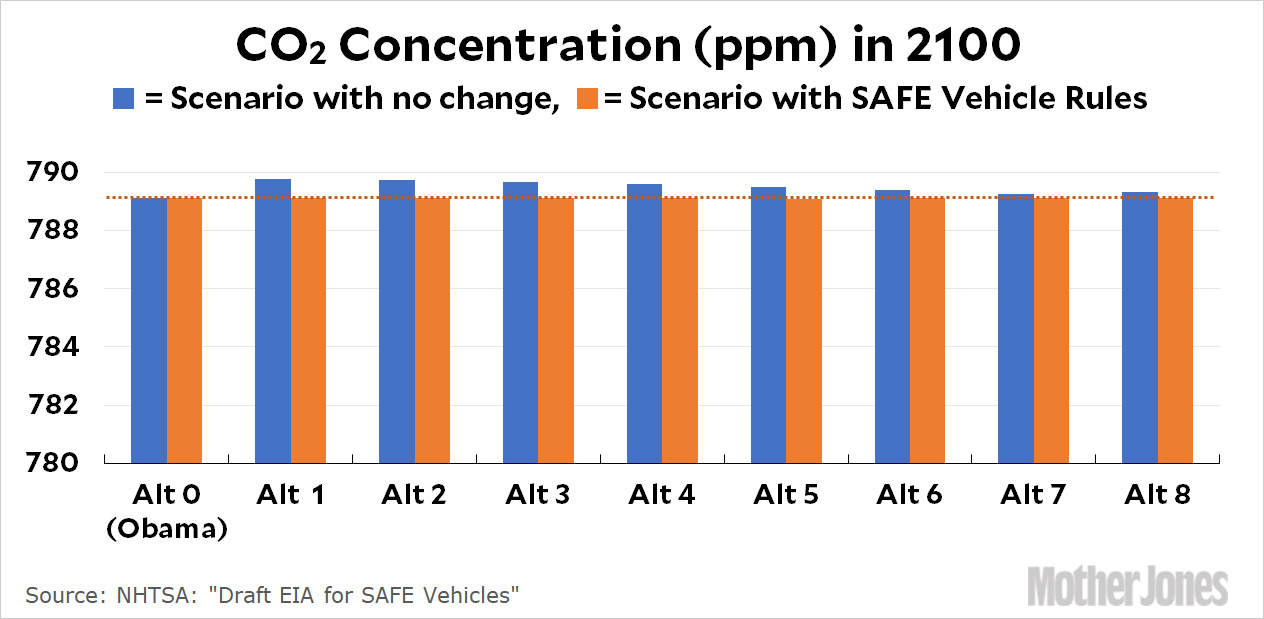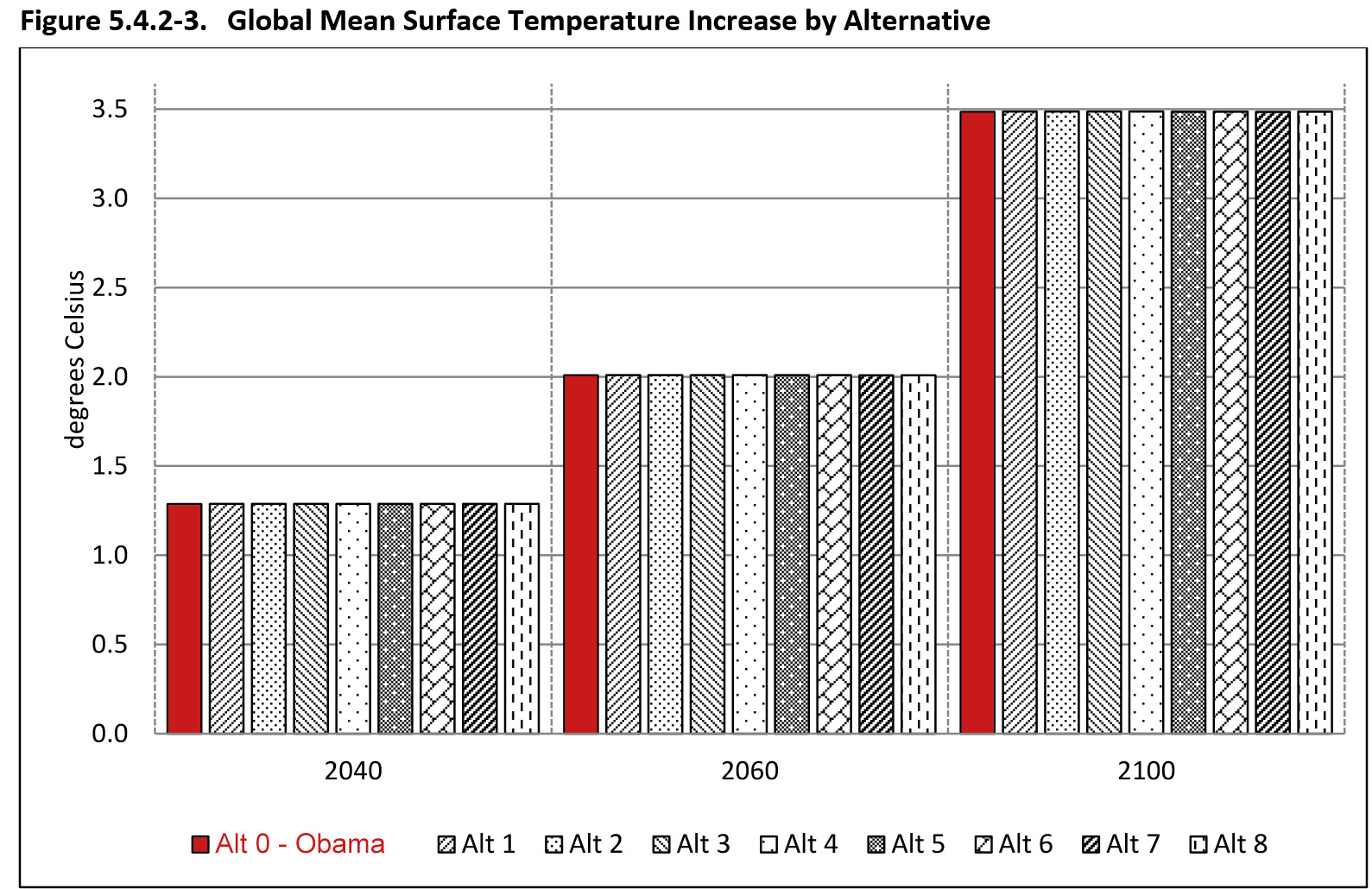
The Washington Post tells us today about a new Trump report on the impact of increasing fuel mileage standards for cars and light trucks:
Last month, deep in a 500-page environmental impact statement, the Trump administration made a startling assumption: On its current course, the planet will warm a disastrous 7 degrees by the end of this century.
A rise of 7 degrees Fahrenheit, or about 4 degrees Celsius, compared with preindustrial levels would be catastrophic, according to scientists. Many coral reefs would dissolve in increasingly acidic oceans. Parts of Manhattan and Miami would be underwater without costly coastal defenses. Extreme heat waves would routinely smother large parts of the globe. But the administration did not offer this dire forecast as part of an argument to combat climate change. Just the opposite: The analysis assumes the planet’s fate is already sealed.
Let’s go straight to the source to check this out. The new NTSA report estimates effects for nine different scenarios. Alternative 0 is the “do nothing” scenario: that is, we keep the Obama rules that were enacted a few years ago. Alternatives 1 through 8 kill off the Obama rules and replace them with a set of standards rising from 1 (don’t change mileage standards at all) to 8 (increase mileage standards by about 2-3 mpg). Here’s the effect on CO2 emissions:

The current Obama standard would decrease CO2 emissions from 1100 megatonnes per year to about 950 megatonnes per year. Not bad! That’s a decrease of 150 megatonnes. Alternative 1, the preferred alternative of the Trump administration would reduce CO2 emissions by only 30 megatonnes.
But wait! How does this affect actual CO2 concentrations in the atmosphere? According to the NTSA, every one of these alternatives has literally zero effect on global CO2 concentration. No matter which one we choose, we end up at 789.11 ppm by the year 2100:

That’s disappointing. How about temperatures?

Once again, there’s no change. Global mean temperatures will rise 3.48ºC by 2100 no matter what.
So what’s the deal? Aside from making some perhaps unwarranted assumptions, the NTSA is measuring global impacts from a smallish US program. This is a longtime conservative hobbyhorse: namely that any change the US makes by itself is necessarily so small that it has barely any global impact. And since climate change is a global problem, what’s the point of taking action by ourselves?
Presumably this could be addressed by taking coordinated action with the rest of the world, but Trump pulled out of the Paris Accord last year, so we can’t do that. Our only alternative is to take action on our own, and clearly that makes no difference at all. So there’s really no alternative left to us. Our best bet is to kill the Obama rules and do nothing:
Using the no-action scenario “is a textbook example of how to lie with statistics,” said MIT Sloan School of Management professor John Sterman. “First, the administration proposes vehicle efficiency policies that would do almost nothing [to fight climate change]. Then [the administration] makes their impact seem even smaller by comparing their proposals to what would happen if the entire world does nothing.”
I think we can expect a lot more “science” reports like this one about climate change in the future—and conservatives will cheer. After all, the whole thing is just a big hoax anyway. Haven’t you heard about the heat island effect and water vapor in the air and solar variability and the “tricks” climate scientists use to get the results they want? Don’t be a sap! Read up on all this stuff and you’ll learn that there’s no global warming at all. All those wildfires and droughts and hurricanes and shrinking ice caps are just totally normal occurrences. Pay no attention to the man behind the curtain.















